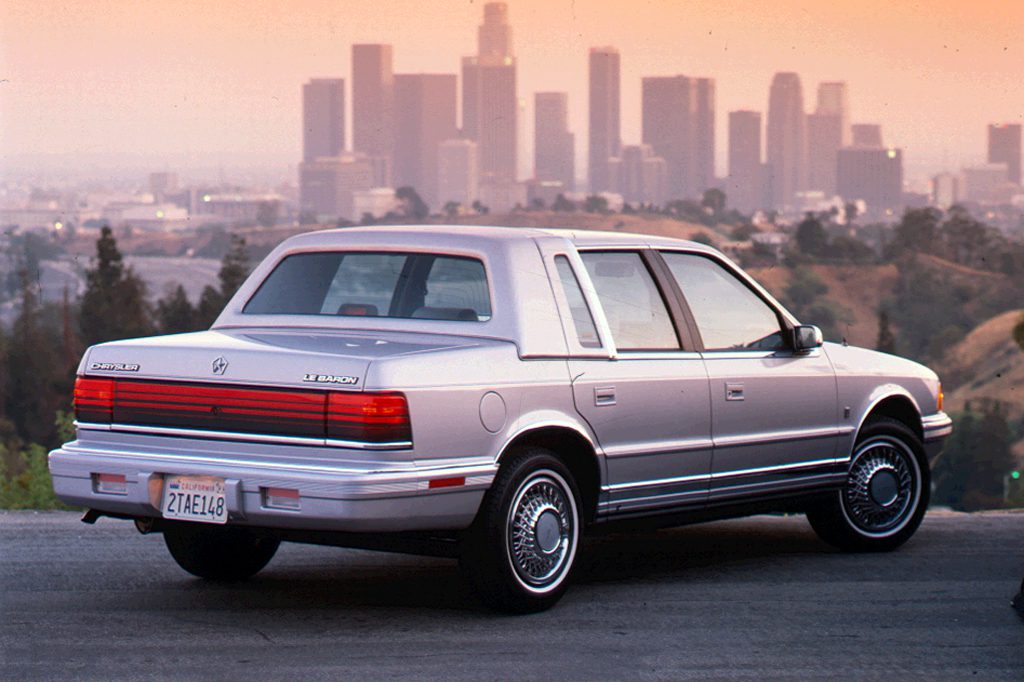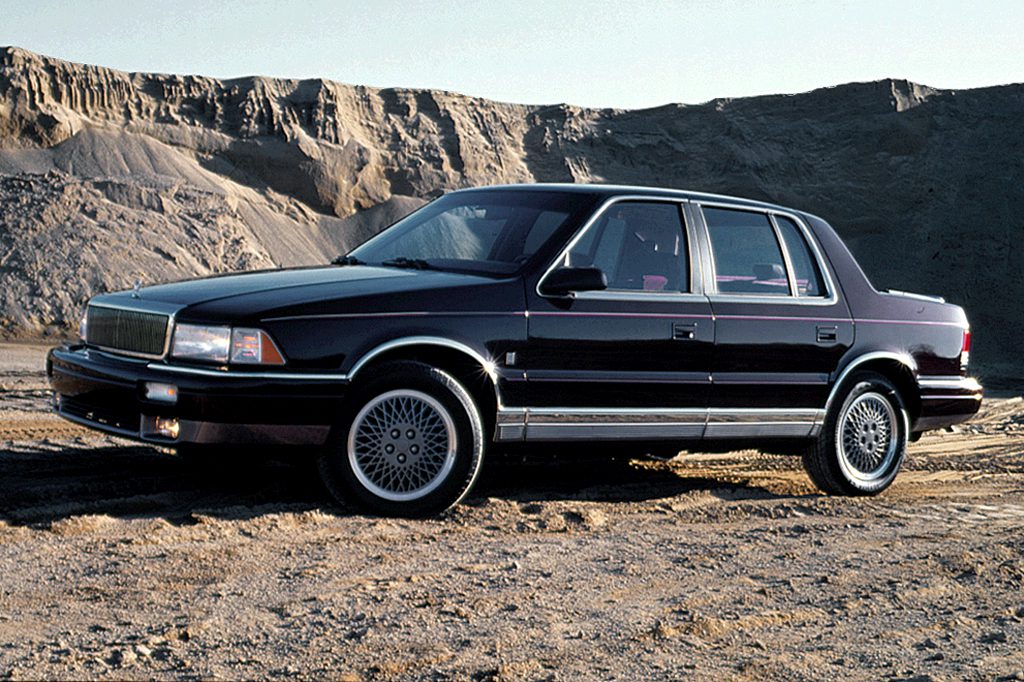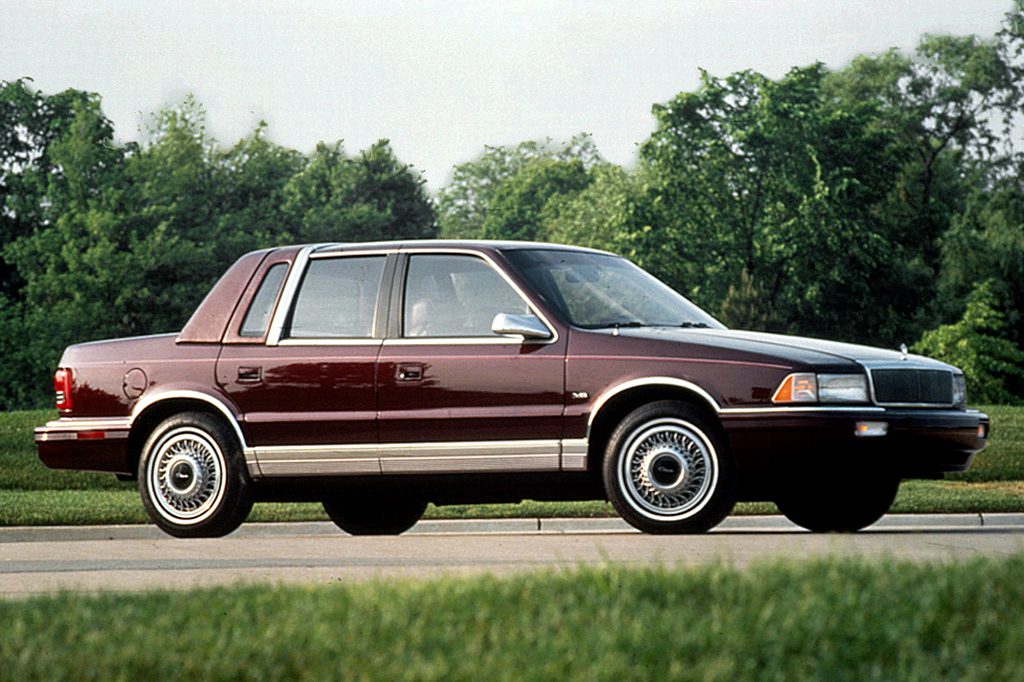| Midsize car; Built in USA, Mexico |
|
|
| Good condition price range: $1,000 – $1,600* |

1990 Chrysler LeBaron

1992 Chrysler LeBaron

1991 Chrysler LeBaron

1992 Chrysler LeBaron LX

1993 Chrysler LeBaron Landau
| Pros: |
|
| Cons: |
|
No, there’s nothing startling about a 4-door LeBaron, but these are solid, capable family sedans offering entry-level luxury and a likable persona, plus a distinctive appearance. Although they lag behind Japanese rivals in overall quality, they’re also cheaper secondhand.
Overview
The new LeBaron sedan was a derivative of the front-drive Dodge Spirit and Plymouth Acclaim. All three shared the same chassis, but the 6-passenger LeBaron came only with V6 power. The three differed mainly in detail and trim choices–and the fact that the Spirit and Acclaim could have 4-cylinder engines. All LeBaron sedans have a driver-side airbag. The LeBaron’s touring suspension package included front gas-charged struts, plus front and rear anti-sway bars.
Yearly Updates
| 1991 LeBaron Sedan Antilock braking became optional in LeBaron sedans for 1991. A new electronic analog speedometer with a secondary metric scale was accompanied by a tachometer, as well as odometer and gauge readouts. |
| 1992 LeBaron Sedan An expanded lineup for ’92 gave LeBaron buyers more powertrain choices. Base, LX, and Landau editions now were available, the latter with a distinctive vinyl roof. Base and Landau LeBarons dropped to a standard 2.5-liter 4-cylinder engine, which sent 100 horsepower to a 3-speed automatic transmission. A V6 engine and 4-speed automatic was standard in the LX sedan and optional in other models. |
| 1993 LeBaron Sedan LeBaron sedans gained fresh taillamps and a new rear fascia for ’93. The mid-level LX disappeared, leaving only a base model (renamed LE) and the top-of-the-line Landau. |
| 1994 LeBaron Sedan LE and Landau LeBaron sedans returned for ’94, adding a motorized shoulder belt for the front passenger, to meet passive restraint requirements. No more 4-cylinder engines were installed, leaving only the V6, now driving a 3-speed automatic transmission. The 4-speed overdrive automatic was an option. |
